Does your dog hide under the bed during thunderstorms? Do they pace and pant when you leave for work? That trembling, those wide eyes—it breaks your heart to see your furry friend so scared. You wish you could explain there’s nothing to be afraid of, but dogs don’t understand the way we do. Their fear is very real, but that doesn’t mean they have to live like this. You can help them feel safe and happy again. Let’s learn easy expert tricks to bring back those happy tail wags!
- Dog anxiety can significantly impact their well-being, with signs like excessive panting and destructive behaviors.
- Physical touch, using gentle strokes on a dog's favorite spots, can release calming hormones and strengthen your bond.
- Regular exercise tailored to a dog’s breed and age can help reduce stress and improve overall mood.
- Desensitization and counterconditioning can change a dog's emotional response to anxiety triggers over time.
The information provided herein is for informational purposes only. Please refer to our disclaimer for more details..
What is Dog Anxiety?
Dog anxiety is a serious condition where a dog experiences a chronic state of worry, nervousness, and fear that significantly impacts their well-being. Unlike brief moments of fear during a stressful situation, anxiety in dogs is persistent and can be debilitating.
Signs of Anxiety in Dogs:
- Excessive panting or drooling
- Restlessness, pacing
- Whining, barking, or howling
- Trembling or shaking
- Hiding or cowering
- Changes in appetite
- Destructive behaviors
- House soiling
Common Causes of Anxiety
Separation anxiety. Distress when left alone or separated from their owner(s).
Noise phobias. Intense fear reactions to loud noises like thunderstorms, fireworks, or construction.
Situational fears. Specific anxieties about car rides, vet visits, strangers, or unfamiliar environments.
Generalized anxiety. A persistent state of worry without a specific trigger.
Medical conditions. Underlying health issues (e.g., pain, hormonal imbalances) can contribute to anxiety.
Expert Tips for Calming an Anxious Dog
Here are some proven ways to calm your anxious dog, reduce stress, and improve their quality of life.
Physical Touch and Contact
Physical touch can be a powerful tool in soothing an anxious dog. But how do you ensure your touch is calming and not adding to the stress? You should focus on petting areas your dog enjoys, like their shoulders, the base of their tail, or a good chest rub. Use slow, gentle strokes, and always pay attention to their body language. A relaxed tail wag and soft eyes mean they’re loving it! But if they stiffen up, lick their lips, or look away, it might be too much.
Gentle touch helps release oxytocin in your dog, a hormone that makes you feel bonded and calm. Just remember, if your dog seems severely panicked, physical touch might overload them—sometimes, creating a little space is the most caring thing you can do.
Exercise and Play
You know how good you feel after a workout; Your dog does too! Regular exercise is one of the best ways to help calm your hyper dog. A tired dog is less likely to feel stressed and anxious. Consider taking your dog on a long walk or run, play a game of fetch, or visit the dog park. Light indoor play with their favorite toys can help them burn off energy and feel more relaxed.
However, not all dogs may need the same type of exercise.
Consider your dog’s breed, age, and fitness level. A playful Labrador puppy might need a long, energetic run, while a senior Dachshund will be happy with shorter walks and sniffing games. Also, interactive games go beyond the walk and encourage your dog to use their problem-solving skills while exercising.
When your dog gets plenty of exercise, they’ll be less likely to get restless or destructive at home. Plus, exercise releases those feel-good endorphins, making it easier to relax and calm.
Desensitization and Counterconditioning
These techniques may sound complicated, but they are, in fact, very simple.
Desensitization is about slowly exposing your dog to whatever triggers their anxiety in a controlled, safe setting.
Counterconditioning means pairing the trigger with something your dog loves, like a super tasty treat or lots of praise. Over time, you can change your dog’s emotional response from fear and anxiety to a happy expectation of good things!
For example, if your dog gets anxious during car rides, start with incredibly short trips around the block paired with their absolute favorite dog treats. Gradually increase the length of the trips as they get more comfortable. The key is to go slowly – pushing your dog too fast can make things worse.
Desensitization and counterconditioning can work for many anxiety triggers, but if your dog’s anxiety is severe, it’s always best to consult with a certified dog trainer or animal behaviorist for professional guidance.
Providing a Safe Space
Creating a safe space for your dog is more than just a physical spot. It’s about giving them a haven where they know they can escape worry or fear. Think of it as their very own canine relaxation zone. This safe space can take a few different forms:
A cozy crate. For crate-trained dogs, a crate with comfy bedding and an always-open door becomes a reassuring retreat.
Designated bed or corner. Choose a low-traffic part of your home and set up a dog bed. This quiet corner offers a simple getaway.
Quiet room. A spare bedroom or office can be a place your dog can escape when things get overwhelming, whether it’s noisy visitors or scary thunderstorms.
Enhance the feeling of a safe space by adding familiar, comforting items. Include your dog’s favorite blanket, calming toys, or even a piece of clothing with your scent. Consider soft white noise (a fan or white noise machine) to mask unsettling sounds and promote peacefulness, and perhaps dim the lights to encourage a relaxed vibe.
Calming Supplements
When your dog needs a little extra help managing stress, calming supplements can be useful. Here’s what you need to know:
Herbal options. Natural remedies like chamomile, valerian root, and passionflower are commonly found in calming blends for dogs.
Nutraceuticals. Supplements like L-theanine (an amino acid), tryptophan (which helps produce serotonin), and casein (a milk protein derivative) show promise in easing canine anxiety.
Pheromones. Synthetic “Dog Appeasing Pheromone” (DAP) mimics the calming signals dogs naturally give off. These come in collars, sprays, or diffusers.
Music Therapy
Did you know that you can use the power of sound to help your dog relax? Believe it or not, music therapy for dogs is a real thing! Music therapy specifically designed for dogs takes advantage of how their brains process sounds to influence their emotional state.
Classical music, with its slow tempos and simple melodies, can be incredibly soothing—think of a relaxing piano piece. You can even find music compositions tailored specifically for canine relaxation, with instrumentals and frequencies researched to have a calming effect.
Music works on several levels! It can mask unsettling noises like thunderstorms or fireworks. The rhythms of calming music can entrain your dog’s heart rate and breathing, leading to a more tranquil physical state. Plus, studies suggest that music may even lower the stress hormone cortisol in many dogs.
Calming Garments
Have you ever noticed how a warm hug can instantly comfort you? Calming garments like Thunder Shirts and anxiety wraps work on a similar principle for your anxious dog. These snug garments mimic a comforting hug, applying gentle, sustained pressure on their torso.
This pressure is believed to trigger a relaxation response, potentially releasing calming neurotransmitters like serotonin and dopamine. The secure feeling these garments provide can also be incredibly soothing for dogs who struggle with generalized anxiety.
Massage
The power of touch can be incredible for both you and your dog! And guess what? Canine massage is not only a delightful treat; it can actually promote relaxation and deepen your connection. Here are a few simple techniques:
Effleurage. Think long, soothing strokes along your dog’s muscles in the direction their fur grows. This helps with blood flow and encourages relaxation.
Petrissage. Imagine gently kneading dough – a similar motion with your fingertips or palms can loosen up tight muscles.
Compression. Gently apply pressure to a specific spot for a few seconds – this can provide tension relief.
Good places to focus include your dog’s back and shoulders, where they often hold stress, the base of the tail, and the area behind their ears (circular motions here can be super soothing!).
Interactive Toys and Games
If your dog gets bored, anxiety can get worse. This is where interactive toys and games come to the rescue! These mentally stimulating activities give your dog a way to use their natural energy and instincts, which can be hugely satisfying and alleviate the stress. Here are some ideas:
Puzzle feeders. Challenge your dog to find a way to get their food out of a fun feeder.
Treat-dispensing toys. Your dog will love working for their treats with these durable, treat-releasing toys.
Snuffle mats. Hide treats in the mat’s pockets, letting your dog satisfy their search-and-find instincts.
Don’t forget simple games like hide-and-seek with treats or toys or even teaching your dog fun scent-work activities. You can even create DIY toys from things like cardboard boxes for extra budget-friendly entertainment.
Alternative Therapies
When dealing with canine anxiety, alternative therapies can be a wonderful addition to conventional strategies. They are particularly helpful when managing anxiety caused by specific triggers or simply promoting a calmer state of mind for your dog. Here are a few alternative therapy options:
Aromatherapy. Essential oils like lavender and chamomile offer calming effects for dogs. Be sure to use pet-safe, diluted oils, as many essential oils are harmful to our furry friends. You can diffuse them throughout your home or try gentle topical application after consulting with your vet.
Acupuncture and acupressure. These techniques are rooted in traditional Chinese medicine, which works by stimulating specific pressure points to balance energy flow and help relieve stress. It’s essential to find a qualified veterinary acupuncturist or someone trained in acupressure for dogs.
Maintaining a Consistent Routine
Dogs find comfort in routine. A predictable daily schedule reduces uncertainty and lowers their overall stress levels. Here are some key areas where routine keeps your dog feel secure:
Mealtimes. Regular feedings regulate digestion and help your dog feel satisfied.
Walks and potty breaks. Consistent outings are essential for their physical and mental health.
Playtime and engagement. Dedicate time every day to bond with your dog through play and interaction. This prevents boredom and makes them feel loved and included.
Bedtime. A consistent sleep schedule supports their natural sleep-wake cycle.
When to Seek Professional Help
If you notice signs of severe stress and anxiety in your dog, it’s crucial to seek help. Here’s what to watch out for:
Persistent pacing or restlessness. Your dog can’t seem to settle, even when things are calm.
Destructive behavior. Chewing, scratching, or destructive actions beyond playful puppy behavior.
Vocalization. Excessive whining, barking, or howling that you can’t stop.
Changes in bodily functions. Loss of appetite, accidents in the house, or digestive issues.
Self-Harm. Compulsive behaviors that cause your dog to hurt themselves.
Recognize signs of severe anxiety in dogs and seek professional help. Certified dog trainers create a desensitization plan for specific triggers. Veterinary behaviorists assess medical causes, prescribe medication, and create a treatment plan. Seek proactive help early to prevent a worsening of symptoms and aggression.
FAQ
Are some dog breeds more anxious than others?
Yes, absolutely! Certain breeds are genetically predisposed to high energy levels or anxiety. Border Collies, Jack Russell Terriers, and Australian Shepherds are known for their boundless energy, while breeds like German Shepherds and Chihuahuas can be more prone to show signs of anxiety.
What medications can help calm your dog’s anxiety?
If your dog has severe anxiety, a veterinarian may prescribe medications like SSRIs (e.g., fluoxetine) or benzodiazepines (e.g., alprazolam). These work by altering brain chemistry to reduce anxious feelings. It’s important to never give your dog medication without consulting a vet first.
What is a natural dog relaxer?
There are a few natural options, like dog calming supplements containing ingredients such as L-theanine or chamomile. Pheromone diffusers (like Adaptil) can also have a soothing effect. Always consult your vet before trying natural remedies.
How can you calm your dog down if they’re really hyperactive?
The best way to calm a hyperactive dog is to provide plenty of exercise and mental stimulation. Long walks, runs, games of fetch, and puzzle toys will help your dog expend excess energy. Consistent training with positive reinforcement can also teach your pup better impulse control.
Where can I touch my dog to be calm?
Most dogs enjoy gentle, rhythmic petting on their chest, shoulders, or the base of their neck. Avoid patting their head or making sudden movements, which can be startling. Every dog is different, so pay attention to their body language to see what they find most calming.
475views
Share on Facebook
 Dark Mode
Dark Mode 

 No fees, cancel anytime
No fees, cancel anytime 






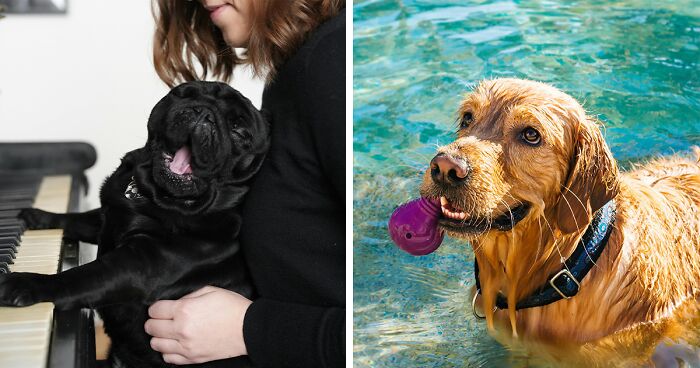
 Image credits:
Image credits: 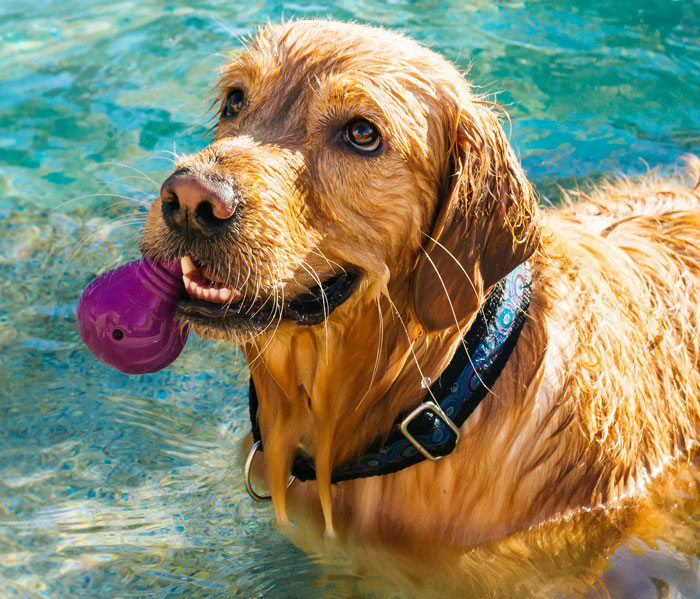 Image credits:
Image credits: 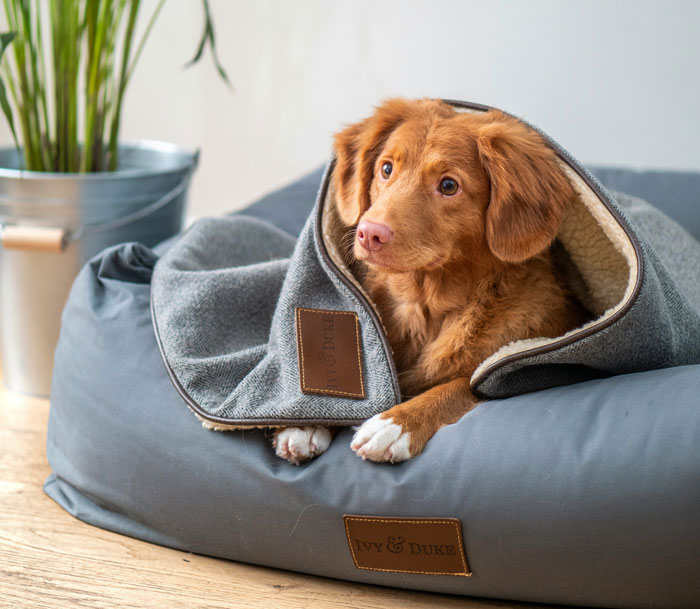 Image credits:
Image credits: 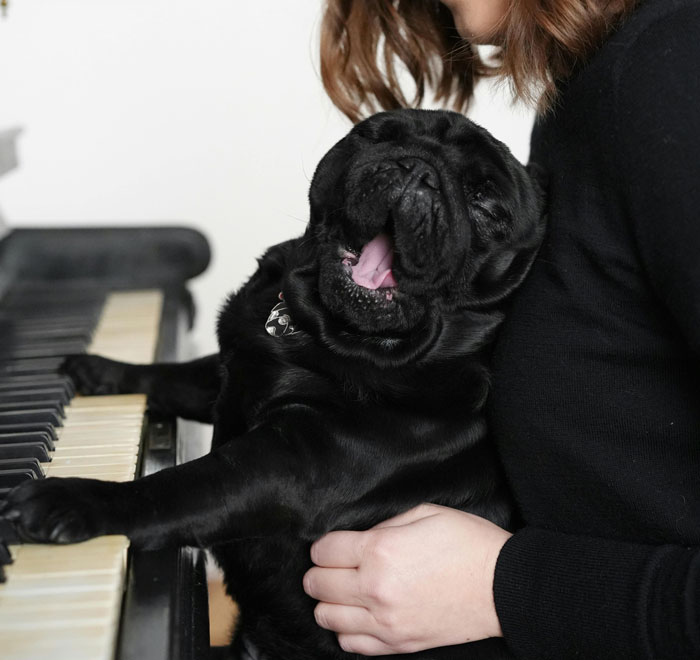 Image credits:
Image credits: 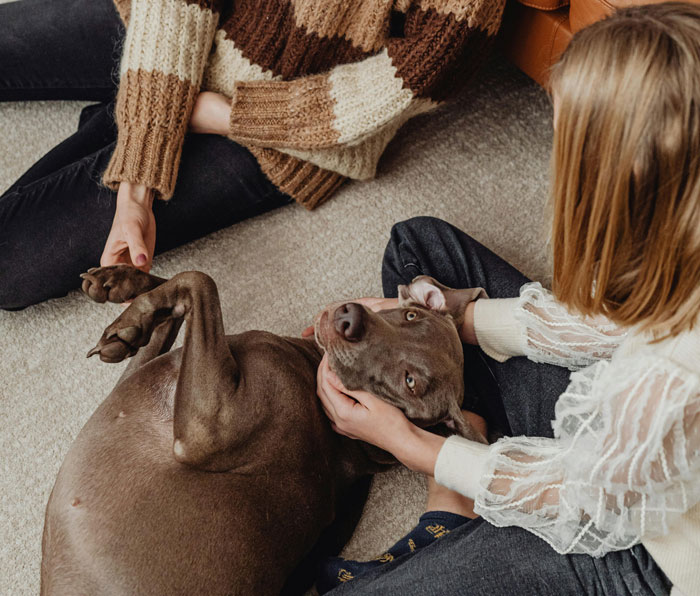 Image credits:
Image credits: 










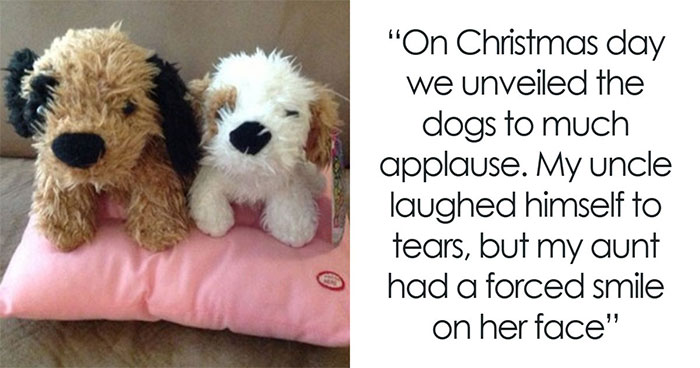































10
0